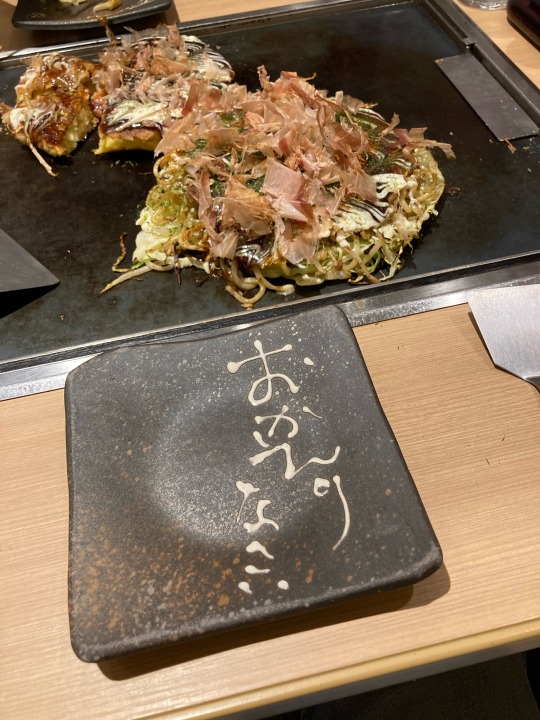#アク
Text

12 notes
·
View notes
Text

My Patreon:
https://www.patreon.com/user?u=93801740
8 notes
·
View notes
Text



3 notes
·
View notes
Text


★ 【nyoro】 「 アクかな // 2人 」 ☆
✔ republished w/permission
⊳ ⊳ follow me! insta • x • bsky
130 notes
·
View notes
Text

初単行本『としうえはれーしょん』、8月30日に発売予定です!!
たわわな愛で包み込んであげる…♪ 十人十色で様々な包容力を持った女の子に包まれるシチュエロ漫画をまとめた単行本になります! ぜひお気に入りの女性上位ックスを見つけてご堪能下さい!!
28 notes
·
View notes
Quote
腹筋ローラーしてる人っぽい


Xユーザーのおじナレフ@東方&ざくアク&ラン垢さん: 「腹筋ローラーしてる人っぽい https://t.co/BU94J7rVzh」 / X
17 notes
·
View notes
Text
The Family in the Ainu Language - UTAR
Dialect used - Saru(JP) - Sar(AI)
オナ ミチ ona, mici - father
ハポ hapo - mother
ユポ ユピ yupo (genitive yupi) - older brother
サポ サハ sapo (gen. saha) - older sister
アク ak - younger brother
マタキ mataki - younger sister
シンリツ sinrit - ancestor
マチ maci - wife (of)
オッカヨ okkayo - man/husband
メノコ menoko - woman
ヘカチ hekaci - child
ポ ポホ po (gen. poho) - child (alt)
ヘカッタラ hekattar - children
マッカチ matkaci - girl
ヘカッタラ hekattar - boy (hekaci/ekaci/ekattar in other dialects)
"Person" is "kur" or "aynu" in Ainu, but did you know that the plural form is irregular? "Utar"(/"utara") depending on dialect.
"Maci" and "menoko" are usually used interchangeably. Okkayo is the only word for "a man" or "a husband" in many dialects.
"Hekattar" means both "boy" and "children".

#langblr#language#learning#studyblr#ainu#grammar#ainu itak#endangered languages#vocab#vocabulary#vocab list#language study#foreign languages#japan
18 notes
·
View notes
Photo

Legends and myths about trees
Elderflower cordial
Elder (Sambucus nigra, Ref) is one of the most familiar trees and few plants have featured more in folklore and traditional medicine in Europe.
Both the flowers and the berries of elder have a long tradition of culinary use, primarily for cordial and wine. But elderflowers are most valued for the refreshing, summery cordial.
Ederflower cordial is relatively easy to make at home, so here is a simple recipe.
How to make elderflower cordial:
[Ingredients: 1 litre (2 pints) elderflowers, Lemon zest, Granulated sugar, Water, Lemons]
Method
Gather enough elderflower sprays to fill a 1 litre (2 pint) measure when lightly packed.
Shake the flowers to make sure there are no insects hiding inside, but don’t wash them as this can spoil the flavour.
Remove as much of the inflorescence stalk as you can – up to where the main stem meets the smaller stems attached to the flowers.
Cover the elderflowers with water. Add lemon zest (as little or as much as you like). Simmer for 30 minutes. Top up the pan if necessary, to keep the liquid covering the flowers.
Strain the flower-infused liquid through muslin or tea towel, gently squeezing it to extract all the juice. Measure the amount of juice.
Add 350g (12 oz) granulated sugar, and the juice of half a lemon, to each 500ml (1 pint) of liquid. Heat gently to dissolve the sugar. Bring to a gentle simmer and skim off any scum. Let the cordial cool.
Pour the liquid through a funnel into clean, sterilised bottles, up to about 1cm below the top. Seal the bottles with swing-top lids, sterilised screw-tops or corks.
Once bottled, the cordial will keep for several weeks in the fridge.
Serve with sparkling water (or still water) for a refreshing drink or add to sparkling wine or champagne for a delicious cocktail.

木にまつわる伝説・神話
エルダーフラワーコーディアル
エルダー (セイヨウニワトコ、参照) は、最も身近な樹木のひとつであり、ヨーロッパの民間伝承や伝統医療でこれほど取り上げられてきた植物は他にない。
エルダー(セイヨウニワトコ) の花も実も、主にコーディアルやワインなど、料理用として長い伝統があるが、エルダーフラワー (セイヨウニトコの花) は、爽やかで夏らしいコーディアルとして最も重宝されている。
エルダーフラワーコーディアルは、家庭でも比較的簡単に作ることができるので、簡単なレシピをご紹介します。
エルダーフラワー・コーディアルの作り方
[材料: エルダーフラワー、 レモンの皮、グラニュー糖、水、レモン]
1L (2pint) のメジャーが軽く埋まるくらいのエルダーフラワーの花を集める。
花を振って中に虫が隠れていないことを確認するが、風味が損なわれるので洗わないこと。
花序の茎をできるだけ取り除き、主茎と花についている小さな茎の境目まで取り除��。
エルダーフラワーを水で覆う。お好みでレモンの皮を加える。30分間煮る。必要に応じて鍋に水を足し、液体が花を覆い続けるようにする。
モスリンかティータオルで濾し、果汁がなくなるまで軽く絞る。果汁の量を量る。
500ml (1pint)の液にグラニュー糖350gとレモン汁半分を加える。軽く加熱して砂糖を溶かす。軽く沸騰させ、アクを取り除く。コーディアルを冷ます。
煮沸消毒した清潔な瓶に、上端から1cmの高さまで液を注ぐ。煮沸消毒したスウィングトップ式の瓶の蓋、スクリュートップ、またはコルクで瓶を密封する。
瓶詰めしたコーディアルは冷蔵庫で数週間保存できる。
炭酸水 (またはミネラルウォーター)で割ると爽やかな飲み物に、スパークリングワインやシャンパンで割ると美味しいカクテルになる。カルピスのように水またはアルコール飲料で薄めて飲む。
#trees#tree legend#tree myth#folklore#elder#elderflower cordial#summer#summery cordial#elderflower cordial recipe#nature#art#herbs
115 notes
·
View notes
Photo

(ネットで見た、きゅうりのアク抜きを試してみた結果 | カマタミワ さんのマンガ | ツイコミ(仮)から)
7 notes
·
View notes
Text

앜칸
8 notes
·
View notes
Text

My Pixiv:
Dasein - pixiv
7 notes
·
View notes
Text

Yeah, I know that feeling. You go to see if they're still doing it but they kick you out by a terrible sword. Sucks, man. But it happens to the best of us.
If you can't relate to this universal experience (Wow. Privilege much?), you can find an explanation behind the cut.

This is from a Google review of a restaurant. Here, やっている ("doing it") means doing business or being open. The phrase "terrible sword" comes from 剣幕 (けんまく), meaning threatening attitude or menacing/angry look. So the reviewer rocked up at 2ish, looking for a late lunch, and they chased him out the door.
剣 means sword or blade (or clock hand! I never knew that!). It's read つるぎ or ケン.
幕 means curtain. It can also refer to an act in a play. It's read とばり, マク, or バク
It's an interesting idiom—someone looks at you so threateningly that it's as if a sword falls down between the two of you like a curtain? That was what I was imagining, but no! According to my (very non-exhaustive) research, it comes from the term 険悪 (けんあく), meaning dangerous/perilous or stern expression/hostile attitude. It came to be pronounced or misheard as けんまく, resulting in this expression. So:
険 is about danger, or the verge of danger. It means precipitous, inaccessible place, impregnable position, steep place, sharp eyes. It can be read けわ.しい or ケン.
悪 means bad or evil, largely speaking. It can be read わる.い, あ.し, にく.い, ああ, いずくに, いずくんぞ, にく.む, アク, or オ (but I'll give you an A- for just remembering わる and アク).
#adventures in my phone takes the liberty to translate everything automatically#to my great detriment and amusement
28 notes
·
View notes
Text
函館市北方民族資料館からのアイヌ語彙表
Ainu Vocabulary List from the Hakodate Museum of Northern Peoples
Orders: [Japanese word] + [English translation] + [Ainu written in katakana] + [Ainu written in Roman letters]
Family / Status
人間 Human アイヌ (aynu)
男性 Male オッカヨ (okkayo)
女性 Female メノコ (menoko)
男の子 Boy ヘカチ (hekaci)
女の子 Girl マッカチ (matkaci)
祖父 Grandfather エカシ (ekashi)
祖母 Grandmother フチ (huci)
父 Father ミチ (mici)
母 Mother ハポ (hapo)
兄 Older brother ユポ (yupo)
姉 Older sister サポ (sapo)
弟 Younger brother アク (ak)
妹 Younger sister
・姉から見て From the perspective of the older sister: マタㇰ (matak)
・兄から見て From the perspective of the older brother: マタパ (matapa)
孫 Grandchild ミッポ (mippo)
叔父 Uncle アチャポ (acapo)
叔母 Aunt ウナㇻペ (unarpe)
夫婦 A married couple ウムレㇰ (umurek)
夫 Husband ホク (hoku)
妻 Wife マッ (mat)
紳士 Gentleman シパ (nisipa)
淑女 Lady カッケマッ (katkemat)
Body
体 Body ネトパケ (netopake)
顔 Face サパ (sapa)
髪 Hair オトㇷ゚ (otop)
額 Eyebrows キプトゥル (kiputuru)
耳 Ear キサラ (kisara)
目 Eyes シㇰ (sik)
鼻 Nose エトゥ (etu)
口 Mouth パㇻ (par)
歯 Teeth ニマク (nimaku)
眉 Cheek ラル (raru)
頬 Eyebrows ノタカㇺ (notakam)
頸・喉 Neck and throat レクッ (rekut)
肩 Shoulders (tap)
背中 Back セトゥㇽ (setur)
腰 Waist イッケウ (ikkew)
手 Hand テㇰ (tek)
指 Finger アッケペッ (askepet)
腹 Belly/stomach ホン (hon)
へそ Bellybutton ハンク (hanku)
尻 Buttocks オソㇿ (osor)
足 Legs チキㇼ (chikir)
Places
国 Country モシㇼ (moshir)
村 Village コタン (kotan)
山 Mountains ヌプリ (nupuri)
川 Rivers ペッ (pet)
海 Sea アトゥイ (atuy)
湖 Lake ト (to)
木 Wood ニ (ni)
森 Forest ニタイ (nitay)
太陽 Sun チュプ (cup)
月 Moon クンネチュプ (kunnecup)
空 Sky ニㇱ (nis)
星 Stars ノチウ (nociw)
春 Spring パイカㇻ (paykar)
夏 Summer サㇰ (sak)
秋 Autumn チュㇰ (chuk)
冬 Winter マタ (mata)
Time
昨日 Yesterday ヌマン (numan)
今日 Today タント (tanto)
明日 Tomorrow ニサッタ (nisatta)
Colours
白 White レタㇻ (retar)
赤 Red フレ (hure)
黒 Black クンネ (kunne)
緑 Green シウニン (shiwnin)
青 Blue シウニンノ (shiwninno)
金 Gold コンカネ (konne)
銀 Silver シロカネ (shirokane)
Faith
神 gods カムイ (kamuy)
祈り・祈祷 Prayer カムイノミ (kamuynomi)
*Anything with a plural stuck to the end, know that it can be singular, and any singular can also be plural. The information is written down in Japanese in which this distinction is not made.
4 notes
·
View notes


